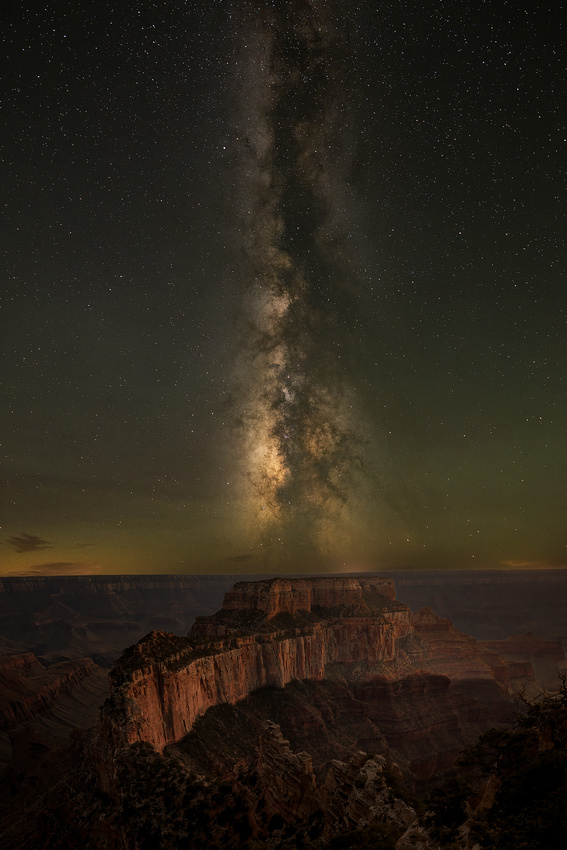A Long Day


The first day of our recent Grand Canyon North Rim trip was a doozy. In the last Friday Photo, I mentioned that it required almost eleven hours of travel to reach the Lodge. And it wasn’t until ten hours later that we put away our cameras.
Why such a long day? The Milky Way.
On July 25, there was a magic two-hour window from midnight until two in the morning. In those two hours, the sky was as dark as it gets, with the visually interesting Milky Way core sufficiently above the horizon, and no moon to wash out the stars.
The Milky Way
Do you ever wonder where you are when you wake up? Here’s a hint.
You (our solar system) are in the Orion-Cygnus arm of the Milky Way. This top-down image clarifies our home. When we’re stargazing, we see our galaxy in a side view, as illustrated in the lower right corner of the graphic.


Image from where in the milky way are we - Bing images
What I photographed is part of the central bulge (core) above the horizon and part of the disk radiating away from the central bulge.
Think Big
The approximately hundred billion stars in the Milky Way may seem to be a big number. But there are an estimated 200 billion galaxies of various sizes in the universe. That adds up to an estimated 30 billion trillion (30,000,000,000,000,000,000,000) stars!
Visit An Atlas of The Universe if you want to better understand our cosmic neighborhood.
The Shot
As soon as we got out of our vehicle at Cape Royal, the four of us could see it! The core was on the horizon to the south and the disk stretched all the way over our heads disappearing on the north horizon.
The night was pleasantly cool, free of bugs. And a few clouds drifted across the horizon in the distance. Perfect! There were lots of “Oohs and aahs” as the Milky Way started to appear on our camera LCD review screens. The faint green is airglow (visible only to the camera), not the Northern Lights.
We returned the next evening to the same spot. Everyone took a photograph of the canyon about 45 minutes after sunset. That photograph was then blended with the previous night’s Milky Way exposure to create the finished image that captured both the canyon’s depths and the enthralling Milky Way.
Thanks for looking,
Chuck Derus